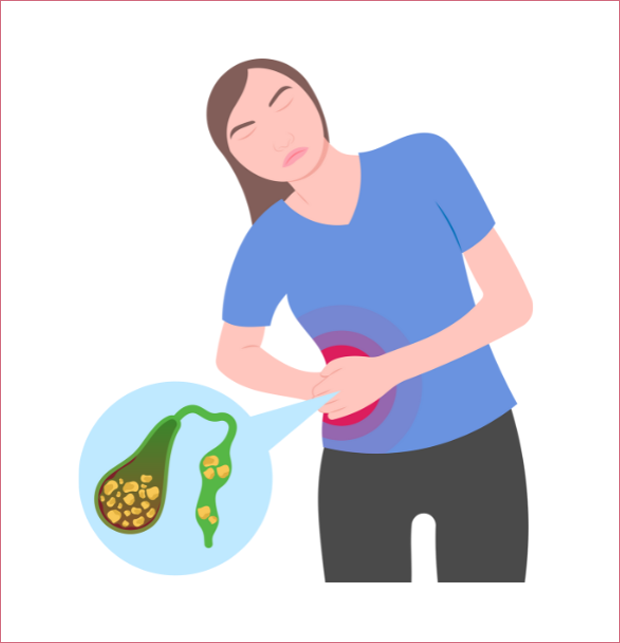
What is Gallbladder Stone Disease?
Gallbladder stone disease occurs when solid particles, called gallstones, form inside the gallbladder. These stones can cause pain, nausea, bloating and digestive issues. If untreated, the condition may lead to more serious complications, including infection or bile duct obstruction.
What Are the Types of Gallbladder Stones?
1. Cholesterol Gallstones
- The most common type (80% of cases).
- Formed when there is excess cholesterol in the bile, leading to crystal formation.
2. Pigment Gallstones
- Smaller, darker stones formed from excess bilirubin (a substance from broken-down red blood cells)
- Black pigment stones: Often linked to liver diseases like cirrhosis.
- Brown pigment stones: Typically associated with bacterial infections in the bile ducts.
3. Mixed Gallstones
- Composed of both cholesterol and calcium salts.
- Less common but may form when cholesterol and bilirubin are both in excess.
What Are the Symptoms of Gallbladder Stones?
Gallbladder stones may cause the following symptoms:
- Sudden pain in the upper right abdomen.
- Nausea and vomiting.
- Bloating and indigestion.
- Jaundice (yellowing of the skin).
- Pain in the right shoulder (due to irritation of the diaphragm).
Note: Some individuals with gallstones do not experience any symptoms and remain asymptomatic.
Ignoring symptoms can lead to complications like bile duct obstruction or infection.
Causes and Risk Factors of Gallbladder Stones
Key causes and risk factors include:
-
Obesity and poor diet:
Especially diets high in saturated and trans fats. -
Family history:
A genetic predisposition can increase the likelihood. -
Age and gender:
More common in women, especially those over 40. -
Diabetes or liver disease:
Can contribute to gallstone formation. -
Rapid weight loss:
This can increase the risk of cholesterol gallstones.
Treatment Options for Gallbladder Stones
Non-Surgical Management
Lifestyle changes, such as adopting a healthier diet and medications may offer temporary relief but do not provide a long-term solution.
Surgical Options
-
Laparoscopic Cholecystectomy:
Minimally invasive procedure using small incisions to remove the gallbladder
Benefits: Faster recovery, minimal scarring and reduced risk of complications like bile leakage.
Typically the preferred option for most cases.
-
Open Cholecystectomy:
Traditional surgery with a larger incision, typically reserved for complex cases or when laparoscopic surgery isn't possible.
May involve mesh placement for added stability
Why Choose Laparoscopic Surgery for Gallbladder Stones?
-
Precise stone removal
with minimal risk of bile duct injury. -
Quick recovery
with less impact on digestion and fewer postoperative complications. -
Lower risk
of bile leakage compared to open surgery -
Minimal scarring
and a faster return to daily activities.
Consult our Surgeon for expert Gallbladder Stone Treatment in Chennai






